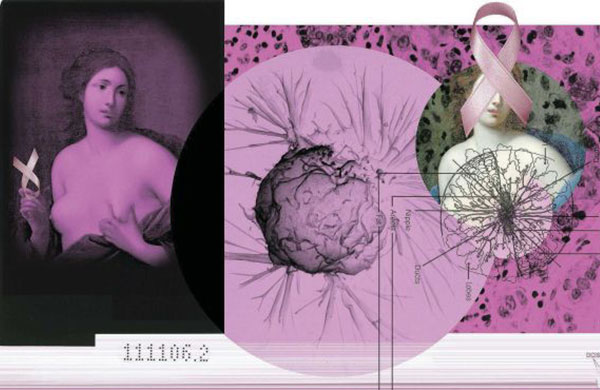
IceCure says that its cryoablation system can kill early-stage growths within minutes without surgery, let alone scarring.
Breast cancer is the most common malignancy among women. Usually, treatment involves mastectomy and chemotherapy or radiation therapy. But there is a lesser-known alternative: cryoablation – to freeze the tumor in its tracks. Literally. No scarring, no hospital stay, though chemotherapy or radiation will still apply, IceCure Medical stresses.
This would be good news for women, given the American Association for Cancer Research projection of 440,000 breast cancer cases in 2030, compared with 283,000 in 2011. (Yes, that rate is faster than population growth, because of rising incidence in elderly women.)
Cryoablation has been around for 25 years and is commonly used to remove external skin blemishes, such as warts. Some companies, like IceCure, have developed it to freeze tumors too, but the Israeli company claims its technology is better.
“Other cryoablation companies use 25-year-old technology,” says IceCure CEO Hezi Himelfarb, an engineer. That old technology is large and clunky, and for that reason (plus safety regulations), its use is confined to operating theaters. IceCure’s system, the minimally invasive IceSense3, is compact and usable in any office, Himelfarb says.
Nor does it require a surgeon: a gynecologist or radiologist can use the device to freeze the tumor within minutes, and send the patient home, Himelfarb adds.
Advantages: Quick and neat
One advantage of the technology is that general anesthetic is not required: local anesthetic suffices. That’s because no surgery is involved. There is no recovery from the physical trauma of being sliced, and no stitches to itch and scar. All this makes cryoablation relatively cheap.
What about side effects? “A minor feeling of congestion [in the breast] for few hours, no need for pain relievers. No other side effects,” Himelfarb states.
Also, the process is quick, says Himelfarb. Its duration depends on the type of growth: benign or malignant.
How does it work? The freezing is done using a slim probe connected to a closed system, which encases liquid nitrogen at -170 degrees Celsius. The doctor inserts the probe into the tumor. No liquid nitrogen contacts the body, but the sheer cold of the probe creates an iceball of frozen tissue.
When tissue freezes, it dies, as every Everest challenger will tell you. The trick is to create an iceball big enough to encompass the entire growth, and if it’s malignant, big enough to encompass a margin of safety as well.
“If the tumor is benign and 2 centimeters in diameter, then we create a 2-centimeter iceball. If our tumor is cancerous and is 2 centimeters in diameter, we want an iceball of 4-5 centimeters in order to have a safety margin, exactly as the surgeon does when excising and removing the tumor,” explains Himelfarb.
The dimensions of the iceball are a function of the time the probe is left in place. The process is closely monitored – from navigating the probe to freezing – using ultrasound. Himelfarb notes that by the nature of the beast, the ice forming inside the breast numbs the tissue, obviating the need for other painkillers other than the local one injected where the probe is inserted.
Creating an iceball to kill a benign growth takes about 7 to 10 minutes, he says. A cancerous one of the same size will take about 15 minutes.
One is left with a lump of dead tissue in the breast. The body gets rid of necrotic tissue naturally, with the help of the immune system. It may take days or even weeks, during which time there is a palpable lump, but it will vanish, Himelfarb reassures, adding that the competing technique – lumpectomy – leaves a void in the breast, which can create deformation.
IceCure’s edge against the competition is the speed of its procedure. According to Himelfarb, the other companies’ technology is older and takes 40 to 45 minutes to freeze a small benign tumor, compared with 7 to 8 minutes for the IceCure technology, for benign growths, or 15-20 minutes for malign ones.
Not for metastases
Cryoablation is only appropriate for small, roughly symmetrical growths. A cancer may start out roughly round, but as it grows its shape may become irregular, rendering the iceball system unsuitable.
The company’s boundaries are to treat benign growths up to 5 centimeters in diameter, but if the growth is malignant, it draws the line at 2 centimeters. Put otherwise: “We treat only early-stage, low-risk breast cancer,” Himelfarb explains.
The technology has received FDA approval in the United States and the CE mark in Europe, for use of the device on benign and malignant growths. It’s already being sold in the United States, Hong Kong, Italy and Thailand. In Israel, the technology is not available, though the Health Ministry has granted its approval. The company hopes to change that soon.
To convince doctors around the world to use the device, the company is building up data on its use in treating cancer through clinical studies. It’s had one running in Japan for years and is setting up a landmark study in the United States, where its device has been installed in 30 hospitals and clinics, and where 10 hospitals so far have confirmed they will participate in the trial.
Regulatory approval in China is also expected soon, he says.
In the United States, insurance will cover the device’s use on benign tumors, but not on cancer, at this stage.
“There is always a population of patients who cannot or do not want to go to surgery, for medical reasons, or reasons of age, or other,” he sums up. And at a later stage, the company hopes to adapt the machine to other forms of cancer, from prostate malignancies to the most common of them all, lung cancer, for which the company is already conducting trials at the Bnei Zion Medical Center in Haifa.
The device costs about $65,000 in the United States, and the cost of treatment generally varies from $25,000 to $30,000. IceCure also intends to make money from selling the disposable part, its proprietary probe system.
IceCure was founded in 2006 by Dr. Alex Levin, a physicist who moved to Israel from Russia, and businessman Didier Toubia. The company, now a smallcap listed on the Tel Aviv Stock Exchange that has raised $40 million since its establishment, has 16 employees and manufactures through subcontractors.
Revenues in 2014 totaled $1.1 million. Among its investors are the Israeli insurance company Migdal and the Chinese company Epoch Partner Investments.



